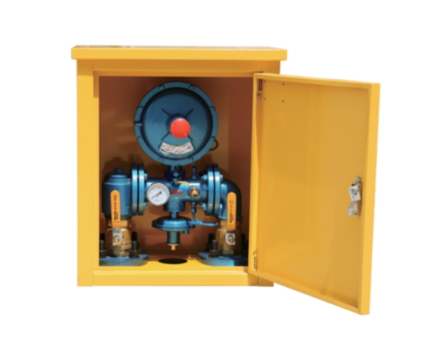
Dec . 13, 2024 04:49
Back to list
natural gas regulator
Understanding Natural Gas Regulators Function and Importance
Natural gas is a vital energy source that powers homes, businesses, and industries across the globe. However, the efficient and safe distribution of this energy requires meticulous regulation of pressure during transportation and use. This is where natural gas regulators come into play, serving a crucial role in ensuring that gas flows smoothly and safely from the supply point to end-users.
What is a Natural Gas Regulator?
A natural gas regulator is a device used to control the pressure of natural gas as it is delivered from a high-pressure pipeline to a lower-pressure distribution network. By maintaining the right pressure, regulators ensure that gas is delivered safely to burners, heaters, and appliances within buildings and facilities. Regulators can be found in a variety of applications, including residential, commercial, and industrial settings.
How Do Natural Gas Regulators Work?
Regulators operate by automatically adjusting the pressure of the incoming gas. High-pressure gas from the main supply is reduced to a suitable level for safe consumption in homes and businesses. The key components of a natural gas regulator include a diaphragm, an adjusting spring, and a valve.
1. Diaphragm This flexible membrane responds to changes in pressure. When the pressure rises above or falls below a set point, the diaphragm moves. 2. Adjusting Spring This spring sets the desired output pressure. If the gas pressure exceeds this level, the compression of the spring will act to close off the valve.
3. Valve The valve controls the flow of gas. When the diaphragm moves due to pressure changes, it opens or closes the valve to maintain the right pressure.
When gas enters the regulator, it faces resistance from the diaphragm and spring mechanism. If the incoming pressure is too high, the diaphragm pushes against the spring, causing the valve to close and reduce the gas flow. Conversely, if the pressure drops too low, the valve opens to allow more gas to flow in. This continuous adjustment is crucial for maintaining the set pressure, which is often around 7 inches of water column (WC) for residential applications.
Types of Natural Gas Regulators
natural gas regulator

Natural gas regulators can be categorized into several types based on their application
1. Service Regulators Designed for residential and light commercial use, these regulators typically reduce the gas pressure from the utility line before it enters the home or building.
2. Industrial Regulators These are used in commercial and industrial applications where large volumes of gas are required. They can handle higher pressures and often have more intricate safety features.
3. High-Pressure Regulators Used for specific applications in industrial settings, these regulators manage extremely high pressures.
4. Region and Pressure-Limiting Regulators These ensure that gas pressure remains within safe limits throughout distribution networks, providing both safety and reliability.
Importance of Natural Gas Regulators
The importance of natural gas regulators cannot be overstated. They not only ensure the safe and efficient distribution of gas but also protect appliances and equipment from the hazards associated with excessive pressure. A malfunctioning regulator can lead to gas leaks, fires, or explosions, making regular maintenance and inspections crucial.
In addition, regulators contribute to energy efficiency. By maintaining optimal pressure, they improve the performance of gas appliances, ensuring that they operate efficiently and safely.
Conclusion
Natural gas regulators are an essential component of natural gas distribution systems. They play a critical role in ensuring that the gas delivered to homes and businesses is at the right pressure, promoting safety and efficiency. As the demand for natural gas continues to grow, the importance of reliable and effective regulators will only increase, making them a key focus for both energy providers and consumers. Understanding how these devices function can help users appreciate their value, enhancing safe and efficient energy use in everyday life.
Latest news
-
Safety Valve Spring-Loaded Design Overpressure ProtectionNewsJul.25,2025
-
Precision Voltage Regulator AC5 Accuracy Grade PerformanceNewsJul.25,2025
-
Natural Gas Pressure Regulating Skid Industrial Pipeline ApplicationsNewsJul.25,2025
-
Natural Gas Filter Stainless Steel Mesh Element DesignNewsJul.25,2025
-
Gas Pressure Regulator Valve Direct-Acting Spring-Loaded DesignNewsJul.25,2025
-
Decompression Equipment Multi-Stage Heat Exchange System DesignNewsJul.25,2025

